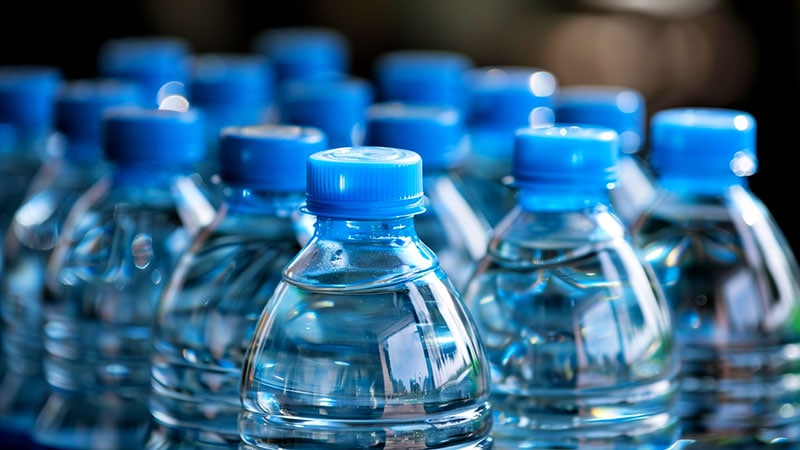Nanoplastics Detected in Water Bottles: Health Risks Revealed
Core Concepts
Nanoplastics in water bottles pose significant health risks due to their ability to enter the bloodstream and organs, raising concerns about human exposure to these tiny particles.
Abstract
The content delves into the detection of nanoplastics in water bottles, highlighting the potential health risks associated with their ingestion. It discusses the findings of American researchers who used advanced microscopic techniques to identify nanoplastic molecules in plastic bottles. The study raises concerns about the impact of these particles on human health and ecosystems, shedding light on the previously unexplored realm of nanoplastics.
Key Highlights:
Detection of 100,000 nanoplastic molecules per liter of water in plastic bottles.
Nanoplastics can enter the bloodstream, cells, and organs, posing health risks.
Global presence of microplastics in various environments, including drinking water and food.
Novelty of the research focusing on nanoplastics derived from the decomposition of microplastics.
Use of stimulated Raman scattering microscopy to identify nanoplastics in bottled water.
Identification of common plastics like polyamide and polyethylene terephthalate in the samples.
Concerns about the unknown composition of the remaining 90% of nanoparticles found in the water samples.
Researchers Uncover Nanoplastics in Water Bottles
Stats
American researchers detected 100,000 nanoplastic molecules per liter of water in plastic bottles.
Researchers identified 110,000-370,000 plastic particles per liter in bottled water samples.
About 90% of the particles found were nanoplastics, while the rest were microplastics.
Quotes
"This study opens a window for us to observe a world we were not exposed to before." - Beizhan Yan, PhD
Key Insights Distilled From
by Stép... at www.medscape.com 01-22-2024
https://www.medscape.com/viewarticle/researchers-uncover-nanoplastics-water-bottles-2024a10001kx
Deeper Inquiries
How can individuals reduce their exposure to nanoplastics in everyday life?
To reduce exposure to nanoplastics in everyday life, individuals can take several proactive steps. Firstly, opting for reusable containers made of materials like glass or stainless steel instead of single-use plastic bottles can significantly decrease the intake of nanoplastics. Additionally, filtering tap water using reliable filtration systems can help remove potential nanoplastic contaminants. Being mindful of the products they use, such as personal care items containing microbeads or synthetic fabrics shedding microfibers, can also minimize nanoplastic exposure. Lastly, supporting initiatives that promote plastic waste reduction and recycling can contribute to reducing the overall presence of nanoplastics in the environment.
What are the potential long-term health effects of nanoplastic ingestion on humans?
The ingestion of nanoplastics poses potential long-term health effects on humans due to their ability to penetrate biological barriers and reach vital organs. Once nanoplastics enter the bloodstream, they can accumulate in tissues and organs, leading to inflammation, oxidative stress, and cellular damage. Over time, this chronic exposure to nanoplastics may contribute to the development of various health conditions, including cardiovascular diseases, neurodegenerative disorders, and even cancer. Furthermore, nanoplastics can disrupt cellular functions, interfere with hormone regulation, and impact the immune system, potentially causing systemic health issues in the long run.
How can regulatory bodies address the presence of nanoplastics in consumer products to ensure public safety?
Regulatory bodies can address the presence of nanoplastics in consumer products to ensure public safety through comprehensive measures. Firstly, implementing strict guidelines and standards for the use of plastics in manufacturing processes can help reduce nanoplastic contamination in products. Regular monitoring and testing of consumer goods for nanoplastic content can also be mandated to ensure compliance with safety regulations. Additionally, promoting research on the health effects of nanoplastics and establishing safe exposure limits can guide regulatory decisions. Collaborating with industries to develop sustainable alternatives to plastic materials and encouraging transparent labeling of products containing nanoplastics are essential steps in safeguarding public health and the environment.
0
